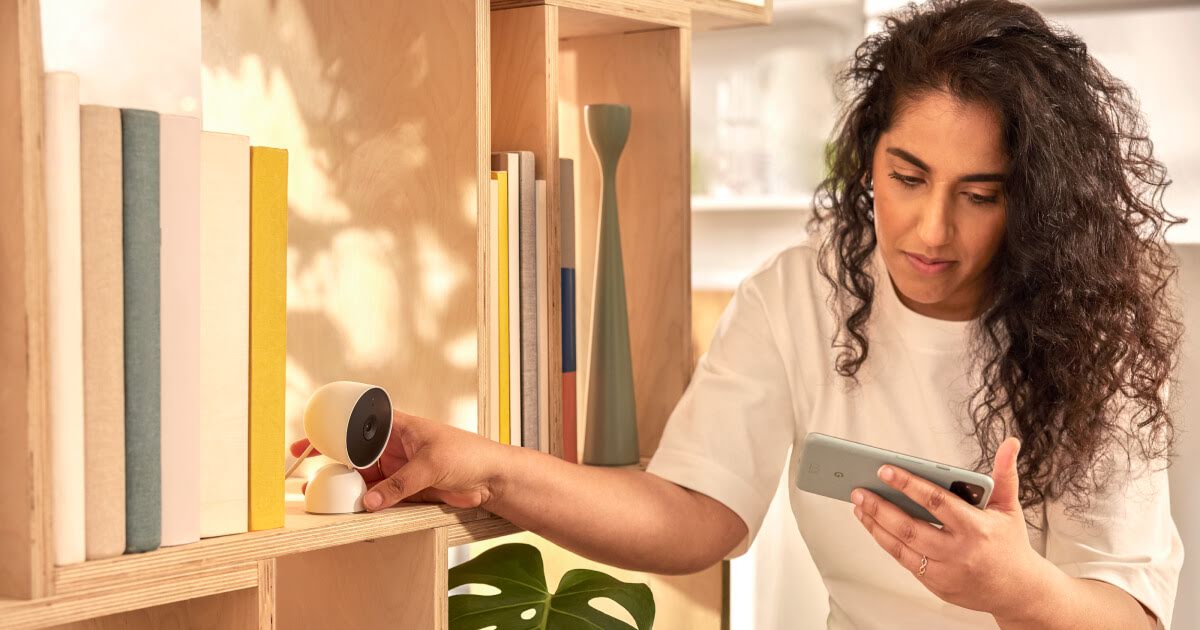smart home google sets the stage for this enthralling narrative, offering readers a glimpse into a story that is rich in detail and brimming with originality from the outset. As the landscape of technology evolves, smart home solutions have become an integral part of modern living, making homes not only more convenient but also more efficient. Google has emerged as a pivotal player in this arena, providing innovative devices and seamless integration with its services, thus transforming ordinary spaces into intelligent ecosystems.
Through a combination of cutting-edge technology and user-friendly interfaces, Google’s smart home products promise to enhance our daily routines, from controlling lighting and temperature to managing security systems. In this exploration, we will delve into the various Google smart home devices, the advantages of integrating them with Google Assistant, and the importance of maintaining security and privacy in an increasingly connected world.
Overview of Smart Home Technology: Smart Home Google

Smart home technology has transformed the way we interact with our living spaces, combining convenience, efficiency, and security into an integrated system. Originating from basic home automation systems, the evolution of smart homes has been propelled by advancements in Internet of Things (IoT) devices, making it possible for homeowners to control various aspects of their homes remotely.
The role of Google in the smart home ecosystem cannot be overstated. Google has been a pioneering force, providing a robust platform through Google Assistant, which serves as a central hub for managing smart devices. This integration allows users to control everything from lights and thermostats to security systems using voice commands or mobile apps.
Benefits of Integrating Smart Home Devices with Google Services
The integration of smart home devices with Google services presents numerous advantages that enhance the user experience. These benefits include increased convenience, energy efficiency, and enhanced security. Below are some of the key advantages:
- Seamless Control: Google Assistant enables users to control multiple devices with simple voice commands, reducing the need for manual adjustments.
- Energy Savings: Smart thermostats and lighting systems can optimize energy use based on user patterns and preferences, contributing to lower utility bills.
- Remote Access: Users can monitor and manage their home environment from anywhere, providing peace of mind and convenience when away from home.
- Enhanced Security: Integration with smart security cameras and alarms allows users to receive real-time alerts and monitor their property remotely.
- Customization: Google services offer personalized routines and automation, tailoring the smart home experience to individual lifestyles.
The synergy between smart home devices and Google’s robust suite of services creates an ecosystem that not only enhances day-to-day living but also prepares homes for future innovations. With ongoing developments, smart home technology continues to evolve, making homes more adaptable to the needs of their occupants.
“Smart homes are not just about automation; they are about creating a living space that understands and anticipates the needs of its inhabitants.”
Google Smart Home Devices

Google has established a strong presence in the smart home market with a wide array of devices designed to enhance convenience, security, and efficiency in the home. From intelligent speakers to smart displays, Google’s offerings provide seamless integration with its ecosystem of services, making them an attractive choice for consumers. Understanding the available devices and their functionalities can help users choose the right products to create a cohesive smart home experience.
Google smart home devices are designed to work together harmoniously, offering a variety of functions that cater to different needs. This section will cover some of the most popular devices on the market, compare them with competitors, and provide a detailed guide on how to set them up effectively.
Popular Google Smart Home Devices
Google’s portfolio of smart home devices includes various innovative products that cater to different aspects of home automation. The following list highlights some of the most notable devices:
- Google Nest Hub: This smart display integrates with Google Assistant to control other smart home devices, play music, display photos, and provide information like weather updates and calendar reminders. The 7-inch touchscreen makes it a versatile addition to any room.
- Google Nest Mini: A compact and powerful smart speaker, the Nest Mini delivers excellent sound quality and allows users to control smart devices via voice commands through Google Assistant. Its design makes it easy to place in various settings.
- Google Nest Audio: This smart speaker is designed for superior audio performance and smart home control. With a larger speaker driver and improved bass response, it enhances music listening experiences while offering voice command functionalities.
- Google Nest Thermostat: This smart thermostat learns user preferences and adjusts the heating and cooling settings accordingly, helping to save energy and reduce utility bills. It can be controlled remotely via the Google Home app.
- Google Nest Cam: Available in indoor and outdoor versions, the Nest Cam provides high-definition video surveillance and can be monitored via the Google Home app. It alerts users to any unusual activities and offers two-way audio communication.
Comparisons with Competitors
Google’s smart home devices compete with offerings from brands like Amazon and Apple. Here is a look at how they stack up against each other in key categories:
| Device | Amazon | Apple | |
|---|---|---|---|
| Smart Speaker | Google Nest Audio | Amazon Echo (4th Gen) | Apple HomePod Mini |
| Smart Display | Google Nest Hub | Amazon Echo Show | None |
| Smart Thermostat | Google Nest Thermostat | Ecobee SmartThermostat | None |
| Security Camera | Google Nest Cam | Ring Doorbell | HomeKit Secure Video (various cameras) |
While Google emphasizes integration with its services and AI capabilities, Amazon often features broader third-party compatibility, and Apple focuses on privacy and ecosystem integration. Each platform has its strengths, and understanding these can help consumers make informed decisions based on personal preferences and existing technology.
Setting Up Google Smart Home Devices, Smart home google
Setting up Google smart home devices is typically straightforward, allowing users to connect their devices quickly and start enjoying the benefits of automation. Here is a step-by-step guide on how to set up Google smart home devices:
1. Download the Google Home App: Available for both Android and iOS, this app is essential for setting up and managing Google smart devices.
2. Create or Log In to Your Google Account: Users need a Google account for full functionality, so either log in or create a new account if necessary.
3. Plug In Your Device: For smart speakers or displays, connect the device to a power source and wait for it to power on. Follow any on-screen prompts.
4. Connect to Wi-Fi: The app will prompt you to select a Wi-Fi network. Choose your network and enter the password when required.
5. Enable Bluetooth: This is necessary for devices that require direct pairing.
6. Add the Device in the App: Tap the ‘+’ icon in the Google Home app to add a new device. The app will search for available devices nearby.
7. Follow On-Screen Instructions: Complete the setup by following any additional prompts or instructions provided by the app. This may include linking other smart home services or adjusting settings.
8. Voice Command Setup (Optional): For devices like the Nest Mini or Nest Audio, you can personalize voice commands and routines to enhance your experience.
By following this guide, users can quickly set up their Google smart home devices and start enjoying a more automated and connected lifestyle.
Integration with Google Assistant
Google Assistant plays a pivotal role in enhancing the smart home experience by providing users with a seamless interface to control their devices. As a voice-activated AI, it allows effortless management of various smart home technologies, creating a more convenient and efficient living environment. The integration of Google Assistant with smart home devices extends beyond simple voice commands, fostering an ecosystem where devices communicate intelligently, respond to user preferences, and automate routines.
Smart Home Commands and Routines
Google Assistant offers a wide array of commands and routines that can be tailored to fit individual lifestyles. Users can create customized routines that automate multiple tasks with a single voice command, simplifying everyday activities. For instance, a “Good Morning” routine might turn on the lights, adjust the thermostat, and start the coffee maker simultaneously. The creation of these routines enhances the user experience by allowing a personalized touch to home automation.
The following points detail the types of commands and routines available with Google Assistant:
- Device Control: Users can control compatible devices such as lights, thermostats, and cameras using simple voice commands like “Turn on the living room lights” or “Set the thermostat to 72 degrees.”
- Custom Routines: Routines can be programmed for specific times or triggered by voice commands, enabling users to automate sequences of actions, such as “I’m leaving” to lock doors and turn off lights.
- Scheduled Actions: Users can set timers, reminders, or schedule events, integrating with calendars for timely notifications, enhancing time management.
Compatibility with Third-Party Devices
Integrating Google Assistant with third-party smart home devices can sometimes present compatibility challenges. While many manufacturers ensure their products work seamlessly with Google Assistant, discrepancies may arise due to differences in protocols or standards. However, there are effective solutions to enhance compatibility and improve functionality.
Understanding the following points can help mitigate compatibility issues:
- Check for Official Support: Before purchasing, verify that the device is compatible with Google Assistant through official listings or user reviews.
- Use Google Home App: This app manages device settings and configurations, often offering troubleshooting tips for integration issues.
- Firmware Updates: Regularly updating device firmware can resolve bugs and enhance compatibility with Google Assistant.
“The integration of Google Assistant with smart home technology transforms user interactions, making automation intuitive and responsive.”
Security and Privacy in Google Smart Homes

As smart home technology continues to evolve, it brings both convenience and challenges, especially in terms of security and privacy. Google smart home devices, while designed to enhance user experience, also introduce potential vulnerabilities that users must address to protect their personal data and home environment. Understanding these risks and implementing best practices is essential for anyone utilizing Google’s ecosystem of smart home technology.
Potential Security Risks Associated with Smart Home Technology
The integration of smart devices into daily life can expose users to various security threats. Common risks include unauthorized access to devices, data breaches, and malware attacks. Smart devices often communicate over the internet, making them susceptible to hacks and cyberattacks. For instance, research shows that many smart home devices lack robust security measures, allowing hackers to gain control over them. Additionally, vulnerabilities in the software or firmware of devices can be exploited, leading to significant privacy breaches.
Best Practices for Maintaining Privacy and Security
To mitigate risks associated with Google smart home devices, users should adopt several best practices. Proper configuration and management of the smart home environment are crucial. Some effective strategies include:
- Use Strong, Unique Passwords: Create complex passwords for your Google account and individual devices to prevent unauthorized access.
- Enable Two-Factor Authentication: Activate two-factor authentication on your Google account to add an extra layer of security.
- Regularly Update Device Firmware: Keep all smart devices updated with the latest firmware to patch known vulnerabilities.
- Limit Device Access: Restrict access to devices only to trusted users and disable guest access when not needed.
- Review Privacy Settings: Regularly check and configure privacy settings for your Google account and connected devices.
Checklist for Securing Google Smart Home Setup
A structured approach to securing a Google smart home can significantly reduce vulnerability. Here’s a helpful checklist for users to follow:
- Change default passwords on all devices to strong, unique passwords.
- Enable two-factor authentication for your Google account.
- Regularly install software updates for all smart devices.
- Review and customize privacy settings for voice assistants and cameras.
- Disconnect unused devices from the network.
- Monitor account activity for any unauthorized access attempts.
- Educate all household members on smart home security practices.
“Security is not a product, but a process.” – Bruce Schneier
Query Resolution
What is a smart home?
A smart home uses internet-connected devices to enable remote management and monitoring of systems and appliances.
How do I set up Google smart home devices?
Set up involves downloading the Google Home app, connecting your devices to Wi-Fi, and linking them through the app for control.
Can I use Google Assistant with other brands?
Yes, Google Assistant is compatible with many third-party devices, but ensure they are listed as Google Assistant-enabled.
Are Google smart home devices secure?
While they include security features, users should follow best practices such as strong passwords and regular updates to enhance security.
What benefits do I get from using Google smart home devices?
Benefits include convenience, energy efficiency, enhanced security, and control over various home systems from a single interface.
The Samsung Galaxy S22+ 5G stands out with its sleek design and powerful performance, featuring an impressive camera system that captures stunning photos in various lighting conditions. Its 5G capabilities ensure that users enjoy ultra-fast internet speeds, making it a great choice for anyone looking to stay connected on the go.
If you’re in the market for a more budget-friendly option, the Samsung Galaxy 10 Lite offers a balanced performance with decent specifications. It provides essential features without compromising too much on quality, making it an excellent pick for those who want a reliable smartphone without breaking the bank.